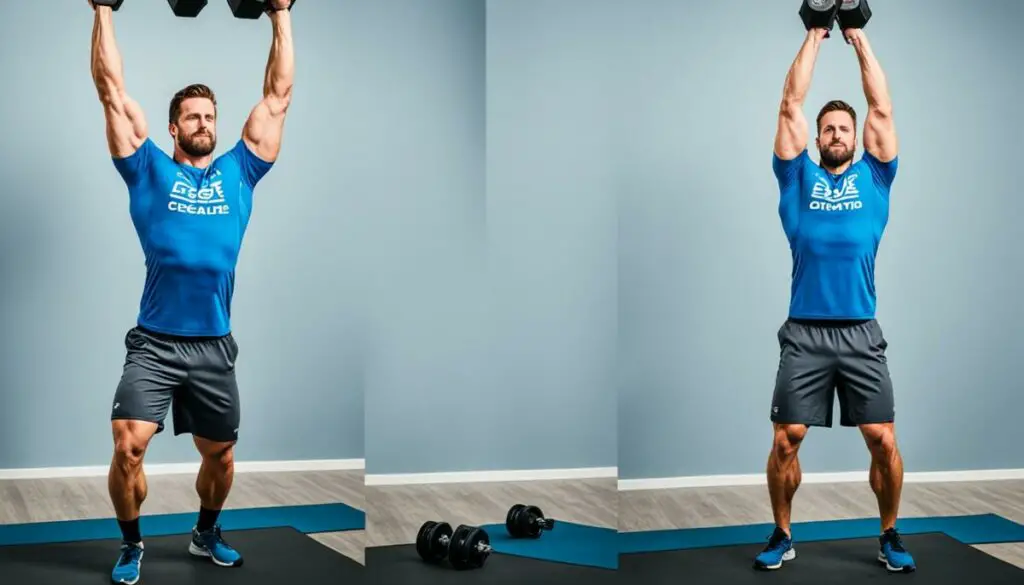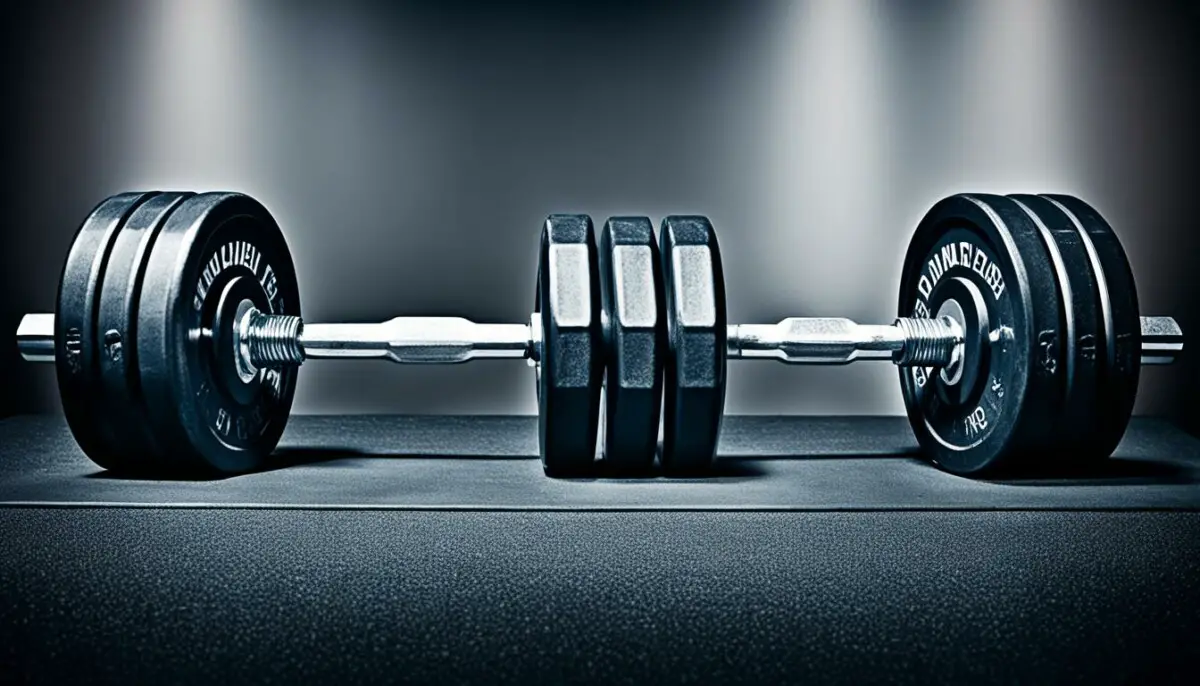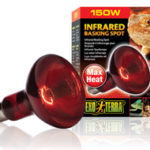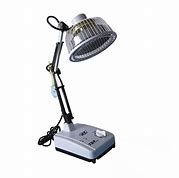Last Updated on 3 months by Francis
The debate between using a barbell or a dumbbell for weight training has been ongoing for years. Both options have their advantages, and it ultimately comes down to personal preference and fitness goals. In this article, we will explore the key differences between barbell and dumbbell exercises to help you determine which is best suited for you.
Contents
Key Takeaways:
- Understanding the difference between barbell and dumbbell exercises is crucial for choosing the right equipment.
- Barbells offer advantages such as the ability to lift heavier weights and perform compound movements.
- Dumbbells are compact and convenient, suitable for all fitness levels, and help build balance and functional strength.
- Consider your fitness goals, space requirements, and individual preferences when deciding between barbells and dumbbells.
- Ultimately, consistency and progress towards your fitness goals are more important than the choice between barbells and dumbbells.
What is a Dumbbell?
A dumbbell is a simple piece of strength training equipment that consists of a short handle with weights on either side. Dumbbells are commonly found in commercial gyms and are essential tools for various strength training exercises. They are versatile and can be used for both upper and lower body workouts. Dumbbells come in different materials, including metal, plastic, rubber, and foam, and are available in various weights, catering to the needs of individuals at different fitness levels.
One of the advantages of dumbbells is their simplicity, as they require minimal space and are easily portable. They are an effective option for those looking to perform strength training exercises at home or in compact environments. Additionally, some modern dumbbells are adjustable, allowing users to combine different weight increments into one pair of dumbbells, offering versatility and convenience.
Whether you are a beginner or an experienced lifter, incorporating dumbbells into your fitness routine can help you build muscular strength and improve overall fitness levels. Plus, using dumbbells can help address muscle imbalances and provide functional strength that translates to daily activities.
Benefits of Dumbbells:
- Compact and convenient for home or compact spaces
- Address muscle imbalances
- Great for upper body workouts
- Various weight options to suit different fitness levels
- Build balance and functional strength
Now that we’ve explored what a dumbbell is and its benefits, let’s dive into the world of barbells in the next section.
What is a Barbell?
A barbell is a fundamental piece of equipment in strength training. It consists of a long metal bar designed to hold weight plates on both ends, providing a versatile tool for a wide range of exercises. Barbell training is highly popular in strength sports such as powerlifting and weightlifting, as well as in general fitness routines.
Barbells come in different types, but the two main categories are Olympic and Standard barbells. Olympic barbells are designed to accept weight plates with a 2″ hole in the center, while Standard barbells accommodate weights with a 1″ center hole. The choice between the two depends on personal preference and the specific training goals.
In addition to the long metal bar, barbells also require weight plates and collars. Weight plates are available in different weight increments, allowing users to customize their training and progressively increase the load. These plates can vary between brands and locations, providing a wide range of options to suit different training needs.
Collars, on the other hand, are used to secure the weight plates in place. They prevent the plates from sliding off during exercises, ensuring safety and stability during lifting sessions. Collars come in various designs, including spring clips and lockjaw clamps, offering different levels of grip and ease of use.
Barbell training provides numerous benefits, such as the ability to lift heavier weights compared to dumbbells, engagement of multiple muscle groups through compound movements, and the opportunity to focus on proper technique and balance. Whether you’re a beginner or an advanced lifter, incorporating barbell exercises can maximize your muscular strength and size while challenging your body in new ways.
Benefits of Barbell Training
Here are some key benefits of incorporating barbell training into your fitness routine:
“Barbell training allows for the lifting of heavier weights, making it ideal for those looking to increase their strength and build muscle mass. It provides a complete and effective full-body workout, engaging multiple muscle groups simultaneously. Additionally, barbell exercises enhance overall body coordination, agility, and power.”
| Benefits of Barbell Training |
|---|
| Ability to lift heavier weights |
| Engages multiple muscle groups |
| Provides a full-body workout |
| Enhances coordination, agility, and power |
Common Dumbbell Exercises

Dumbbells are versatile pieces of equipment that can target various muscle groups. Whether you’re looking to strengthen your upper body or tone your lower body, dumbbell exercises can help you achieve your fitness goals.
Here are some common dumbbell exercises:
Upper Body Exercises
- Bench Press: Lie flat on a bench and press the dumbbells upward using your chest muscles.
- Shoulder Press: Hold the dumbbells at shoulder level and press them overhead, engaging your shoulders and arms.
- Bicep Curls: Stand with a dumbbell in each hand, palms facing forward, and curl the weights upward using your biceps.
Lower Body Exercises
- Squats: Stand with your feet shoulder-width apart, holding dumbbells at your sides, and lower into a squat position while keeping your back straight.
- Lunges: Take a step forward with one leg, holding dumbbells in each hand, and lower your body until your front leg is bent at a 90-degree angle.
These exercises are just a starting point, and there are many more dumbbell exercises you can explore to target specific muscle groups and achieve a well-rounded workout routine.
Include dumbbell exercises in your workout routine to improve strength, build muscle, and enhance overall fitness.
Common Barbell Exercises

Barbell exercises are a staple in weightlifting and strength training routines. They are known for their intensity and ability to engage multiple muscle groups through compound movements. Incorporating barbell exercises into your workout regimen can help you build strength, improve muscle coordination, and increase overall power.
Here are some common barbell exercises that you can incorporate into your training:
- Deadlift: The deadlift is a compound exercise that targets the posterior chain, including the back, hips, and legs. It involves lifting a loaded barbell from the floor to a standing position, focusing on proper form and technique.
- Back Squat: The back squat is a fundamental lower body exercise that primarily targets the quadriceps, hamstrings, and glutes. It involves squatting down with a loaded barbell resting on the upper back and shoulders.
- Bench Press: The bench press is a classic upper body exercise that targets the chest, shoulders, and triceps. It involves lying flat on a bench and pressing a loaded barbell upwards while maintaining proper form and control.
- Clean and Jerk: The clean and jerk is an explosive Olympic weightlifting movement that engages the entire body. It involves lifting a loaded barbell from the floor to overhead in two distinct phases: the clean and the jerk.
- Snatch: The snatch is another Olympic weightlifting movement that requires explosive power and coordination. It involves lifting a loaded barbell from the floor to overhead in one fluid motion.
These exercises are just a few examples of the many barbell movements you can incorporate into your training routine. Each exercise offers unique benefits and challenges, and they can be modified to suit different fitness levels and goals.
Whether you are a beginner or an advanced lifter, barbell exercises can help you achieve your fitness goals. They offer versatility, allowing you to target specific muscle groups and improve overall strength. Incorporate these exercises into your training routine and consult with a fitness professional to ensure proper form and technique.
Benefits of Dumbbells

Dumbbells offer several benefits that make them a versatile and effective tool for strength training. Whether you’re a beginner or an advanced fitness enthusiast, incorporating dumbbells into your workout routine can help you achieve your fitness goals.
Compact and Convenient
Dumbbells are compact and easy to store, making them an excellent choice for home workouts. They take up minimal space and can be stored in a small corner or even under your bed. With dumbbells, you can set up a workout space in the convenience of your own home, eliminating the need for a gym membership or travel time.
Address Muscle Imbalances
Dumbbells allow for unilateral training, which means you can work each side of your body independently. This is particularly beneficial for addressing muscle imbalances. By using dumbbells, you can focus on strengthening weaker muscles and improving overall balance and symmetry.
Great for Upper Body Workouts
Dumbbells are renowned for their effectiveness in targeting the upper body. From chest and shoulder exercises to bicep and tricep workouts, dumbbells provide a wide range of exercises that engage and challenge the muscles of the upper body. They allow for a greater range of motion compared to other weightlifting equipment, activating the stabilizer muscles and promoting functional strength.
Variety of Weight Options
One of the key advantages of dumbbells is the variety of weight options available. From light to heavy weights, you can easily adjust the resistance to suit your fitness level and progression. This flexibility makes dumbbells suitable for beginners and experienced lifters alike.
Suitable for All Fitness Levels
Whether you’re just starting your fitness journey or you’re a seasoned athlete, dumbbells can be tailored to suit your fitness level. Beginners can begin with lighter weights and gradually increase the intensity as they become stronger. Advanced lifters can challenge themselves with heavy dumbbells and incorporate advanced techniques such as drop sets and supersets.
Build Balance and Functional Strength
Dumbbells require you to engage your core and stabilize your body during exercises. This not only improves balance but also builds functional strength that translates into real-life movements. By using dumbbells, you can enhance your overall body coordination and stability, leading to better performance in activities like sports, daily tasks, and other physical activities.
Dumbbells offer a wide range of benefits, including their compact and convenient size, versatility in addressing muscle imbalances, effectiveness for upper body workouts, variety of weight options, suitability for all fitness levels, and ability to build balance and functional strength. Incorporating dumbbells into your workout routine can help you achieve your fitness goals and enhance your overall fitness and well-being.
Next, let’s explore the benefits of barbells and how they can complement your fitness journey.
Benefits of Barbells

When it comes to weightlifting, barbells offer a multitude of benefits that can take your training to the next level. From the ability to lift heavier weights to maximizing muscular strength and size, incorporating barbells into your workouts can yield impressive results.
Lifting Heavier Weights
One of the primary advantages of using barbells is the ability to lift heavier weights compared to dumbbells. The long metal bar allows for greater load capacity, allowing you to progressively increase the resistance and push your limits. This ability to handle heavier weights is especially beneficial for individuals looking to build strength and increase muscle mass.
Full-Body Workouts
Barbells are highly versatile and can be used to perform a wide range of exercises that engage multiple muscle groups simultaneously. This makes them ideal for full-body workouts that target not only specific muscles but also promote overall strength and coordination. With barbells, you can design comprehensive workout routines that address all major muscle groups, ensuring balanced development and enhancing functional fitness.
Professional Weightlifting Training
Barbells are an integral part of professional weightlifting training. Whether you aspire to compete in powerlifting, Olympic weightlifting, or simply want to train like a pro, barbells are the go-to equipment. The consistent use of barbells under the guidance of a qualified trainer can help you develop the necessary technique and form required for advanced lifting movements, such as the clean and jerk or snatch.
Learning Proper Technique and Balance
Using a barbell requires a greater emphasis on technique and balance compared to other weightlifting equipment. The necessity to stabilize a long bar with heavy weights demands precision and control. As you master the proper technique and maintain balance throughout each repetition, you’ll engage your core muscles and improve your overall stability, resulting in better form and reduced risk of injury.
Maximize Muscular Strength and Size
If your goal is to maximize muscular strength and size, barbells are an excellent choice. The ability to lift heavier weights with proper form and targeted muscle engagement stimulates the recruitment of a greater number of muscle fibers, leading to greater strength gains. Additionally, the compound movements performed with barbells, such as deadlifts and squats, involve multiple muscle groups, allowing you to work multiple areas of the body simultaneously for efficient muscle development.
Incorporating barbells into your strength training routine can yield remarkable results by increasing your ability to lift heavier weights, facilitating full-body workouts, enabling professional weightlifting training, enhancing your technique and balance, and maximizing muscular strength and size.
Major Differences Between Dumbbells and Barbells
When comparing dumbbells and barbells, several key differences stand out:
- Weight Capacity: Dumbbells generally have a lower weight capacity compared to barbells. Barbells allow for the addition of more weight plates, making them suitable for heavy lifting and advanced strength training.
- Type of Training: Dumbbells are versatile and can be used for a wide variety of exercises, including both upper and lower body workouts. Barbells, on the other hand, are commonly used for powerlifting and Olympic lifting exercises that involve compound movements targeting multiple muscle groups simultaneously.
- Space Requirements: Barbells require more space due to their longer length and the need for a designated area to safely load and unload weight plates. Dumbbells, especially adjustable ones, are more compact and can be easily stored or used in limited space.
- Suitability for Different Fitness Levels: Dumbbells are suitable for individuals of all fitness levels, including beginners, as they allow for a wide range of weight options and can be adapted to various strength levels. Barbells are better suited for advanced lifters who have developed proper technique and strength.
Both dumbbells and barbells offer a variety of exercises to target different muscle groups and achieve fitness goals.
| Dumbbells | Barbells | |
|---|---|---|
| Weight Capacity | Lower | Higher |
| Type of Training | Versatile, suitable for various exercises | Mainly used for powerlifting and Olympic lifting exercises |
| Space Requirements | Compact, require less space | Longer length, require more space |
| Suitability for Different Fitness Levels | Suitable for all fitness levels | More suitable for advanced lifters |
| Variety of Exercises | Wide range of exercises possible | Primarily used for specific compound movements |
When to Choose Dumbbells or Barbells
The choice between dumbbells and barbells ultimately depends on individual preferences and fitness goals. Whether you’re a beginner, bodybuilder, or runner with different goals, it’s important to consider what works best for you.
For beginners, starting with dumbbells can be beneficial. Dumbbells allow beginners to focus on proper form and technique without the added complexity of a barbell. By mastering the basics with dumbbells, beginners can build a solid foundation for future strength training.
Bodybuilders often incorporate both dumbbells and barbells into their training routines. Dumbbells are great for isolating specific muscles and targeting muscle imbalances. On the other hand, barbells are ideal for compound exercises that engage multiple muscle groups simultaneously, helping bodybuilders build overall strength and size.
Runners, on the other hand, may prefer dumbbells for their greater range of motion and unilateral training benefits. Dumbbell exercises can help runners address muscle imbalances, improve stability, and enhance functional strength, all of which are essential for performance on the track or road.
Ultimately, the decision between dumbbells and barbells should be based on specific goals and personal preferences. Consider your training objectives, fitness level, and the type of movements you enjoy. It’s also worth noting that both dumbbells and barbells offer a variety of exercises, allowing you to switch things up and keep your workouts engaging.
Overall, the key is to choose the equipment that aligns with your individual needs and preferences. Whether you opt for dumbbells or barbells, the most important thing is to stay consistent with your workouts and make progress towards your fitness goals.
Conclusion
When it comes to choosing between a barbell and a dumbbell, it ultimately boils down to personal preferences and fitness goals. Both options offer unique advantages that can enhance your workout routine.
Consider factors such as weight capacity, type of training, space requirements, and your individual experience level to decide which equipment suits you best. If you prioritize lifting heavier weights and engaging multiple muscle groups, a barbell might be the right choice. On the other hand, if you value convenience, versatility, and addressing muscle imbalances, dumbbells are a great option.
It’s important to experiment with different exercises and equipment to find what works best for you. Remember, the key to achieving your fitness goals is consistency, regardless of whether you opt for barbells or dumbbells. So, choose the equipment that aligns with your preferences and start making progress towards a stronger, fitter you!
FAQ
What is the difference between a barbell and a dumbbell?
A barbell is a long metal bar that holds weight plates on both ends, while a dumbbell is a short handle with weights on either side.
What are the benefits of using a barbell?
Barbells allow for lifting heavier weights, are effective for full-body workouts, and are commonly used in professional weightlifting training.
What are the benefits of using a dumbbell?
Dumbbells are compact and convenient, address muscle imbalances, and offer a variety of weight options suitable for all fitness levels.
What are some common dumbbell exercises?
Common dumbbell exercises include the bench press, shoulder press, bicep curls, squats, and lunges.
What are some common barbell exercises?
Common barbell exercises include the deadlift, back squat, bench press, clean and jerk, and snatch.
What are the major differences between dumbbells and barbells?
The major differences include weight capacity, type of training, space requirements, suitability for different fitness levels, and variety of exercises.
When should I choose dumbbells over barbells?
Dumbbells are suitable for beginners, bodybuilders, and runners, and are a popular choice for those looking to address muscle imbalances or focus on specific muscle groups.
When should I choose barbells over dumbbells?
Barbells are ideal for advanced lifters, professional weightlifting training, and for those looking to lift heavier weights and maximize muscular strength and size.
How do I choose between dumbbells and barbells?
The choice between dumbbells and barbells ultimately depends on individual preferences and fitness goals. Consider factors such as weight capacity, type of training, space requirements, and personal experience levels.
What equipment should I choose for weight training?
The choice between barbells and dumbbells should be based on your specific goals and personal preferences. Experiment with different exercises and equipment to find what works best for you.









